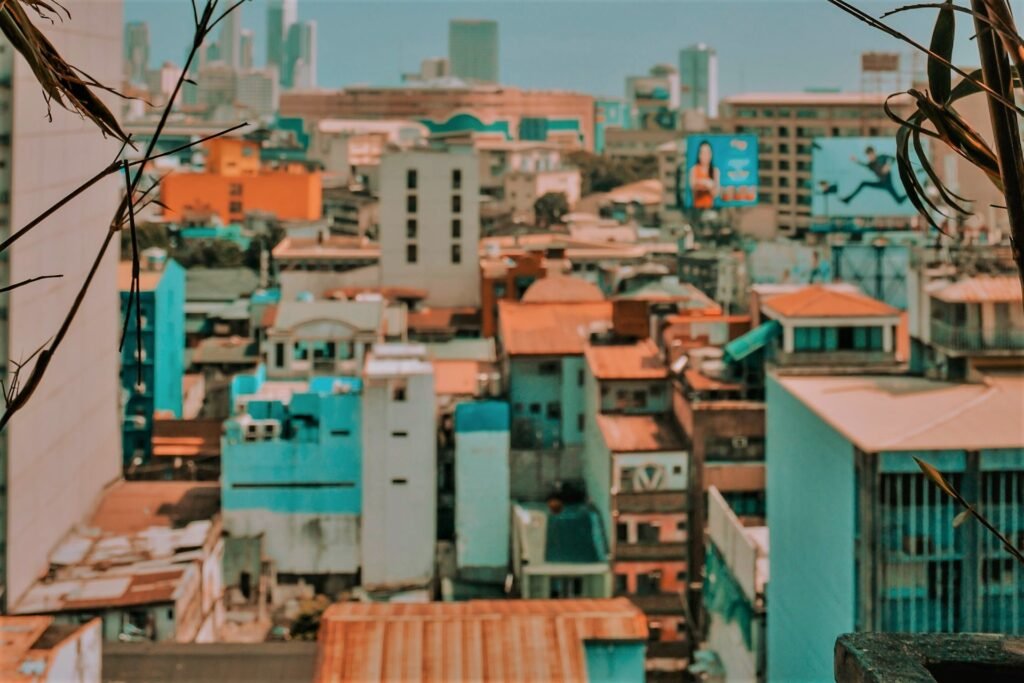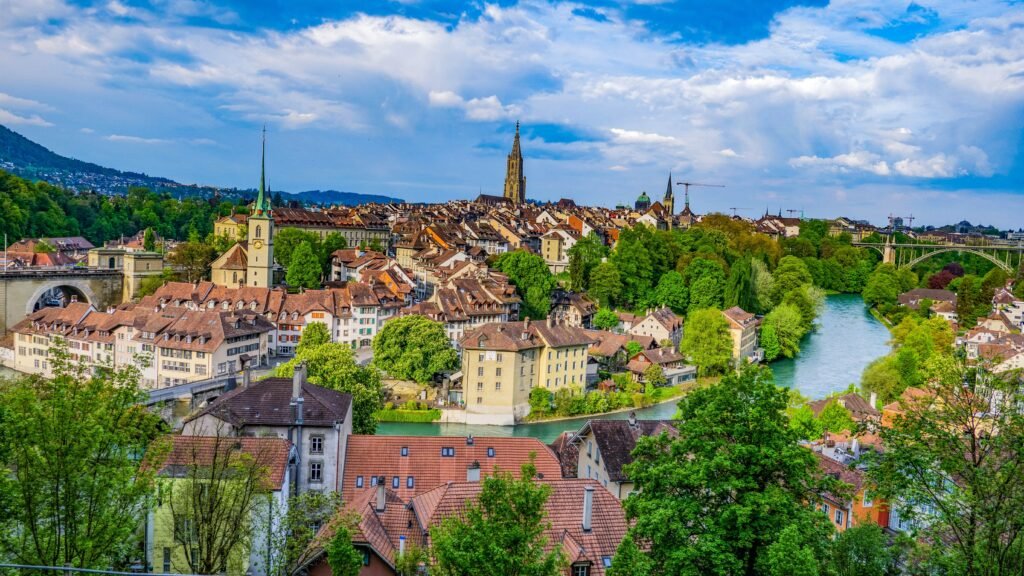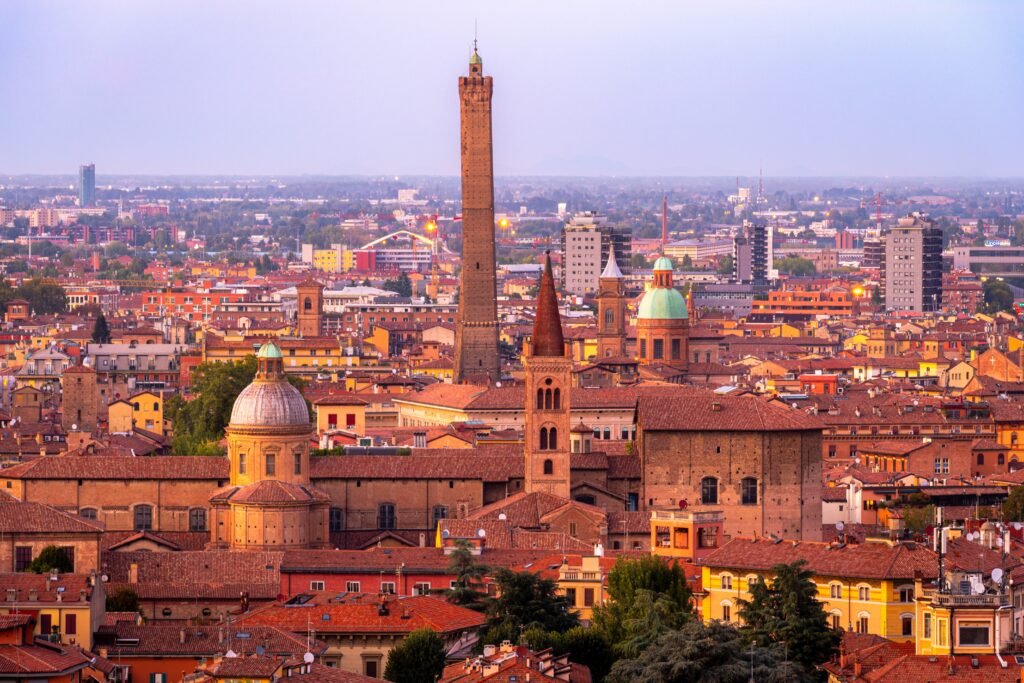Welcome to Sampaloc Manila, a district with a captivating blend of history, cultural diversity, and natural wonders. Nestled within the bustling cityscape of the Philippines’ capital, Sampaloc stands as a testament to the nation’s rich heritage and vibrant spirit. In this blog, we will embark on an enchanting journey, exploring ten themes that make Sampaloc a unique and must-visit destination for travelers and locals alike. Planning a trip to Manila ? See here for travel insurance and here for flights to Manila.
Table of Contents
Historical Heritage Sampaloc Manila
Sampaloc Manila, is steeped in historical heritage, bearing witness to significant events and developments that have shaped the Philippines’ history. As one of the oldest districts in Manila, it boasts several landmarks and structures that showcase its rich past. Here are some key aspects of Sampaloc’s historical heritage:

- Spanish Colonial Era: During the Spanish colonial period, Sampaloc was a significant part of the walled city of Intramuros. It was primarily an agricultural area known for its tamarind trees (“sampalok” in Filipino), from which it derived its name. Spanish influences are still evident in the district’s architecture, particularly in old churches and ancestral houses.
- San Sebastian Church: One of the most iconic landmarks in Sampaloc is the San Sebastian Church, located in the Quiapo area. This awe-inspiring structure is the only all-steel basilica in Asia and is considered a national cultural treasure. Designed by Genaro Palacios and Gustave Eiffel, the church was completed in 1891 and has since been a symbol of resilience and faith, surviving earthquakes and fires.
- University of Santo Tomas (UST): Established in 1611, UST is one of the oldest universities in Asia and is an integral part of Sampaloc’s historical heritage. The university was initially founded in Intramuros before being transferred to its current location in Sampaloc Manila. The main building, known as the Main Building or “Miguel de Benavides Building,” is a prominent example of Neo-Renaissance architecture and has been an enduring symbol of education in the Philippines.
- Historic Houses and Buildings: Sampaloc is dotted with several historic houses and buildings that offer glimpses into the past. Some of these structures have been converted into museums or cultural centers, while others continue to serve as residences. Exploring these sites allows visitors to travel back in time and appreciate the architectural styles prevalent during different periods.
- Japanese Occupation: During World War II, Sampaloc, like the rest of Manila, experienced the harsh realities of the Japanese occupation. The district witnessed intense fighting and widespread destruction during the Battle of Manila in 1945. Several historical accounts and artifacts from this era can be found in various museums and memorial sites.
- Cultural and Religious Festivals: Sampaloc is known for its vibrant cultural and religious festivals that have been celebrated for generations. The Feast of the Black Nazarene, held every January 9th, attracts millions of devotees from around the country. The procession features a centuries-old statue of the Black Nazarene, believed to possess miraculous powers.
- University Belt: Sampaloc’s historical heritage is closely tied to its identity as an educational hub. The concentration of universities and educational institutions in the area has earned it the moniker “University Belt.” Generations of students have passed through these hallowed halls, contributing to the district’s vibrant atmosphere and academic traditions.
- Cultural Preservation Efforts: Efforts have been made to preserve and protect Sampaloc’s historical heritage. Conservation projects, guided tours, and educational programs aim to raise awareness about the district’s history and significance. The presence of heritage zones and protected structures ensures that future generations can continue to appreciate the area’s rich past.
Sampaloc Manila’s historical heritage, is a tapestry of captivating stories, architectural marvels, and cultural legacies. The district’s evolution over the centuries reflects the nation’s resilience and the profound impact of various influences on its development. Whether you’re a history enthusiast or simply curious about the past, exploring Sampaloc’s historical landmarks and cultural treasures is a journey worth embarking on.
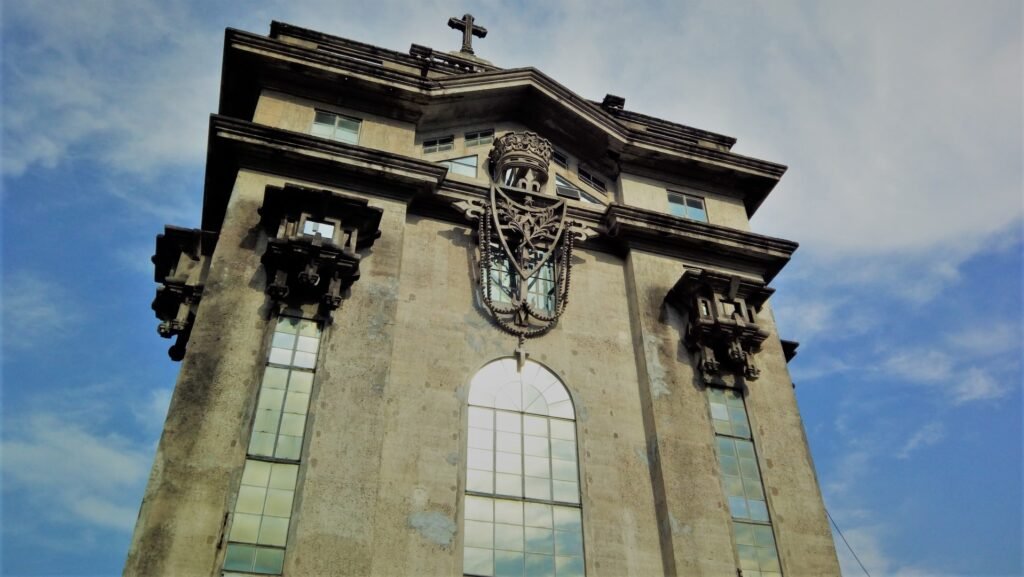
Cultural Kaleidoscope
Sampaloc Manila, is a cultural kaleidoscope that brings together a diverse tapestry of traditions, cuisines, and festivities. As one of the most populous districts in Manila, Sampaloc is a melting pot of cultures, reflecting the rich heritage of the Philippines and the influences of various communities. Here are some aspects that highlight the district’s vibrant cultural kaleidoscope:

- Cultural Diversity: Sampaloc is home to a wide array of cultural groups, including Filipinos from different regions, Chinese, Indians, and various expatriate communities. This diversity is evident in the district’s religious practices, culinary delights, and social customs.
- Religious Practices and Festivals: The district is a microcosm of the Philippines’ deeply rooted religious traditions. Catholicism is predominant, with numerous churches and chapels scattered throughout the area. Sampaloc residents actively participate in religious processions, novenas, and feast day celebrations, contributing to the vibrant religious atmosphere. Aside from the Feast of the Black Nazarene, Sampaloc Manila also celebrates various other religious festivals, including the Feast of Santo Niño and the feast days of patron saints of different barangays (neighborhoods).
- Culinary Delights: The culinary scene in Sampaloc is a delightful reflection of its cultural diversity. Sidestreet eateries, popularly known as “carinderias,” serve up an assortment of Filipino dishes, each with its distinct regional influence. From savory adobo to spicy Bicol Express, visitors can embark on a gastronomic journey to savor the authentic flavors of the Philippines. Additionally, Chinese restaurants, Indian curry houses, and other international eateries cater to the diverse tastes of the district’s residents and visitors.
- Local Markets: Sampaloc’s local markets are a treasure trove of cultural experiences. Quiapo Market, located at the heart of the district, is a bustling hub where you can find everything from fresh produce and textiles to religious items and amulets. The market is also famous for its vibrant street vendors selling everything from street food to trinkets, creating a lively and dynamic ambiance.
- Language and Communication: The linguistic landscape of Sampaloc Manila is fascinating, with multiple languages and dialects being spoken due to its multicultural population. While Filipino (Tagalog) is the national language, English is widely used, especially in educational institutions. Additionally, many residents speak Chinese, Indian languages, and various regional dialects, showcasing the linguistic diversity of the district.
- Cultural Centers and Events: Various cultural centers, art galleries, and community spaces in Sampaloc play a vital role in promoting and preserving the district’s cultural heritage. These venues host art exhibitions, traditional performances, workshops, and lectures, providing a platform for local artists and cultural enthusiasts to showcase their talents and share their knowledge.
- Traditional Crafts and Handicrafts: Sampaloc Manila is also known for its local artisans who produce traditional crafts and handicrafts. From weaving to woodcarving, these skilled craftsmen create beautiful and intricate products that reflect the Filipino identity and cultural heritage.
- Community Spirit: The cultural kaleidoscope of Sampaloc is not just about diversity but also the strong sense of community among its residents. Whether it’s coming together to celebrate religious festivals, supporting local businesses, or organizing community activities, the district’s residents actively foster a sense of belonging and pride in their cultural heritage.
Sampaloc Manila, is a cultural kaleidoscope that celebrates the richness of the Filipino identity and embraces the influences of diverse communities. As you explore the district, you’ll be immersed in a vibrant blend of traditions, cuisines, and festivities that make Sampaloc an enchanting and welcoming place for visitors and locals alike.

Educational Hub
Sampaloc Manila, is widely recognized as an educational hub and has earned the moniker “University Belt” due to its concentration of esteemed educational institutions. It is a bustling district that attracts students from all over the Philippines and beyond. Here are some key features that make Sampaloc a prominent educational center:
- Prestigious Universities: Sampaloc is home to some of the oldest and most prestigious universities in the Philippines. The University of Santo Tomas (UST), founded in 1611, is the oldest university in Asia and is considered the “Catholic University of the Philippines.” UST offers a wide range of courses, including humanities, sciences, law, medicine, and more. Other notable universities in the area include Far Eastern University (FEU), University of the East (UE), and Manila University (NU).
- Academic Excellence: The universities and colleges in Sampaloc Manila boast a reputation for academic excellence and have produced countless notable alumni. These institutions are at the forefront of research and innovation in various fields, making significant contributions to the development of the country.
- Diverse Courses: The educational offerings in Sampaloc cover a wide spectrum of disciplines, catering to students’ diverse interests and career aspirations. Whether one is interested in engineering, business, arts, health sciences, law, or other fields, Sampaloc’s universities provide a comprehensive range of courses and programs.
- International Students: Sampaloc Manila attracts a significant number of international students seeking quality education in the Philippines. The universities’ global reputation, coupled with the country’s welcoming atmosphere, makes it an attractive destination for international students pursuing higher studies.
- Cultural and Intellectual Atmosphere: The presence of numerous universities creates a dynamic cultural and intellectual atmosphere in Sampaloc. The district is always abuzz with students engaged in various academic pursuits, research, and extracurricular activities. The vibrant campus life fosters a sense of camaraderie and intellectual exchange among students from different backgrounds.
- University Belt Landmarks: As you explore Sampaloc Manila, you’ll come across iconic university landmarks, including UST’s Main Building, FEU’s Art Deco structures, and UE’s Recto Campus. These landmarks not only contribute to the district’s historical heritage but also serve as symbols of academic excellence and cultural significance.
- Research and Innovation: Sampaloc’s universities play a crucial role in driving research and innovation in the Philippines. Research centers and laboratories within these institutions conduct groundbreaking studies and contribute to advancements in various fields, making Sampaloc Manila an important hub for academic and scientific progress.
- Accessibility: Sampaloc’s central location and excellent public transportation connectivity make it easily accessible to students from different parts of Manila and nearby provinces. The district’s accessibility contributes to its popularity as a choice destination for those seeking higher education.
- Cultural and Sports Activities: Beyond academics, Sampaloc’s universities also offer a wide range of cultural and sports activities. Student organizations and clubs promote cultural appreciation and foster talents in arts, music, dance, and sports. These extracurricular activities enrich the overall learning experience of students.
Sampaloc Manila, stands as a vibrant educational hub with a rich history and a bright future. Its prestigious universities, diverse academic offerings, cultural and intellectual atmosphere, and commitment to research and innovation make it an attractive destination for students and scholars seeking quality education and academic growth. The district’s influence extends far beyond academics, contributing significantly to the social and cultural fabric of the Philippines.

Architectural Marvels
Sampaloc Manila, is a treasure trove of architectural marvels that showcase the district’s rich history and cultural heritage. As one of the oldest areas in Manila, Sampaloc features a stunning blend of architectural styles, from Spanish colonial structures to modern skyscrapers. Here are some of the architectural gems that make Sampaloc a captivating destination:

- San Sebastian Church: The San Sebastian Church is undoubtedly one of the most impressive architectural marvels in Sampaloc Manila. This all-steel basilica stands as a symbol of resilience and faith, having withstood earthquakes and fires since its completion in 1891. Designed by Genaro Palacios and Gustave Eiffel, the church features Gothic revival architecture with intricate steelwork and stained glass windows.
- University of Santo Tomas Main Building: The Main Building of the University of Santo Tomas (UST) is an iconic landmark in Sampaloc. Designed by Father Roque Ruaño, O.P., it exemplifies Neo-Renaissance architecture. Completed in 1927, the building features grand columns, statues, and a central tower. Its facade and interiors reflect the university’s rich history and commitment to education.
- Far Eastern University (FEU) Art Deco Buildings: FEU’s Art Deco buildings, designed by National Artist Pablo Antonio, are notable architectural gems. The FEU campus is home to several structures with sleek lines, geometric patterns, and decorative motifs typical of the Art Deco style. These buildings serve as a testament to the university’s role in promoting art and culture in the Philippines.
- Heritage Houses: Sampaloc Manila is dotted with historic houses that provide glimpses into the district’s colonial past. Some of these houses have been preserved and converted into museums or cultural centers, allowing visitors to appreciate the architectural splendor and lifestyle of a bygone era.
- Modern Skyscrapers: Amidst the historical buildings, modern skyscrapers and commercial structures add to Sampaloc’s urban landscape. These buildings represent the district’s growth and development over the years and serve as centers for business, education, and commerce.
- Religious Structures: Apart from the iconic San Sebastian Church, Sampaloc is home to numerous other churches and places of worship, each boasting unique architectural features. These religious structures reflect the spiritual diversity and devotion of the district’s residents.
- Educational Facilities: Sampaloc’s status as an educational hub is evident in its campus architecture. Modern university buildings, libraries, and research centers are designed to facilitate learning and research, combining functionality with aesthetic appeal.
- Mix of Architectural Styles: One of the most captivating aspects of Sampaloc’s architectural landscape is the fusion of different styles. As you explore the district, you’ll encounter a delightful mix of Spanish colonial, Art Deco, Neoclassical, modern, and contemporary designs, representing different periods of history and cultural influences.
- Heritage Zones: To preserve the district’s architectural heritage, certain areas in Sampaloc Manila have been designated as heritage zones. These zones aim to protect historically significant structures and promote architectural conservation.
Sampaloc Manila, is a haven for architectural enthusiasts and history lovers alike. The district’s architectural marvels encompass a wide range of styles, reflecting its rich history, cultural diversity, and urban development. Whether it’s the grandeur of the San Sebastian Church, the Art Deco elegance of FEU’s buildings, or the blend of old and new throughout the district, Sampaloc’s architectural treasures offer a captivating journey through time and culture.

Bustling Markets
Sampaloc Manila, is renowned for its bustling markets that offer a vibrant and immersive experience of local life and commerce. These markets are essential hubs for residents to purchase fresh produce, daily necessities, clothing, and various other goods. Here are some of the bustling markets in Sampaloc that are worth exploring:

- LRT 2 Recto Station Area: Located near the LRT 2 Recto Station, this area is a bustling commercial hub where various markets converge. Here, you’ll find a mix of street vendors, sidewalk stalls, and small shops selling a wide range of products, from fruits and vegetables to clothes, accessories, and electronics. The lively atmosphere and constant flow of people make it an exciting place to explore.
- Quiapo Market: Quiapo Market is a famous landmark in Sampaloc Manila and is known for its variety of goods and religious items. It surrounds the Quiapo Church, which houses the Black Nazarene statue, drawing large crowds, especially during religious events. The market offers everything from fresh produce, textiles, and handicrafts to religious amulets, charms, and novelties.
- Dapitan Arcade: Dapitan Arcade is a popular destination for home decor and handicrafts. Located along Dapitan Street, the arcade is a go-to place for shoppers looking for unique and affordable home furnishings, arts and crafts, and party decorations. It’s a treasure trove for creative individuals and DIY enthusiasts.
- Isetann Mall: Isetann Mall, located near the LRT 2 Recto Station, is a multi-story shopping center with a lively market-style ambiance. It houses various stalls selling a wide range of products, from clothes and accessories to gadgets and toys. The mall is popular among students and bargain hunters due to its affordable prices.
- Suki Market: Suki Market is a neighborhood market located along Antipolo Street, offering a mix of fresh produce, meats, and dry goods. It caters to the daily needs of the locals and is a great place to experience the day-to-day hustle and bustle of the community.
- Sampaloc Public Market: The Sampaloc Public Market is the main public market in the district. It’s a sprawling market where you can find a diverse array of goods, including fresh seafood, fruits, vegetables, meat, and household items. The market operates early in the morning until late afternoon, catering to the needs of residents and visitors alike.
- Street Food Stalls: In addition to the organized markets, Sampaloc Manila is teeming with street food vendors offering a delectable array of local snacks and delicacies. From traditional street food like fish balls and kwek-kwek (quail eggs) to sweet treats like halo-halo and turon (banana spring rolls), the streets of Sampaloc are a food lover’s paradise.
Visiting the bustling markets of Sampaloc offers not only a chance to shop for unique products and taste local treats but also an opportunity to immerse yourself in the vibrant energy and daily life of the district’s residents. It’s an experience that will undoubtedly leave a lasting impression of Sampaloc’s authentic charm.

Parks and Nature Retreats
While Sampaloc Manila, is primarily known for its urban landscape, the district offers several parks and nature retreats that provide a welcome escape from the bustling city life. These green spaces provide opportunities for relaxation, recreation, and communing with nature. Here are some of the parks and nature retreats in Sampaloc:
- Mehan Garden: Mehan Garden, also known as the Mehan Botanical Garden, is a historic park located near the Manila City Hall. Established in 1884, the garden features well-manicured landscapes, a picturesque lagoon, and statues depicting mythological figures. It is a serene oasis amidst the city’s concrete jungle, making it an ideal spot for leisurely strolls and picnics.
- Rizal Avenue Park (Lacson Underpass Garden): The Rizal Avenue Park, also known as Lacson Underpass Garden, is a pedestrian underpass transformed into a mini-park adorned with greenery and artistic murals. It serves as a refreshing stopover for pedestrians, providing a respite from the busy traffic along Rizal Avenue.
- La Mesa Ecopark: Although not located within Sampaloc itself, La Mesa Ecopark is worth mentioning as it is relatively nearby and offers a full-fledged nature retreat. Situated in Quezon City, the park spans over 33 hectares and is home to a vast man-made lake, lush forests, and diverse flora and fauna. It’s an excellent destination for nature walks, birdwatching, biking, and picnics.
- Malacanang Garden: The Malacanang Garden is a beautiful green space located near the Malacañang Palace, the official residence of the President of the Philippines. While not always open to the public, the garden occasionally hosts special events and is sometimes accessible during public celebrations.
- Sampaloc Lake (San Juan): While not a traditional park, Sampaloc Lake in San Juan is a charming body of water that offers a relaxing view and a serene atmosphere. Visitors can stroll along the lakeside, enjoy the cool breeze, and savor the sight of lush greenery surrounding the lake.
- University Campuses: Several universities in Sampaloc Manila have their own campus green spaces that serve as mini-parks for students and the local community. These areas often have shaded walkways, benches, and open spaces for relaxation and leisure activities.

While Sampaloc may not have expansive natural reserves within its boundaries, these parks and green spaces offer much-needed breathing space for residents and visitors. They are ideal spots for unwinding, enjoying leisure activities, and connecting with nature, even in the heart of the city.
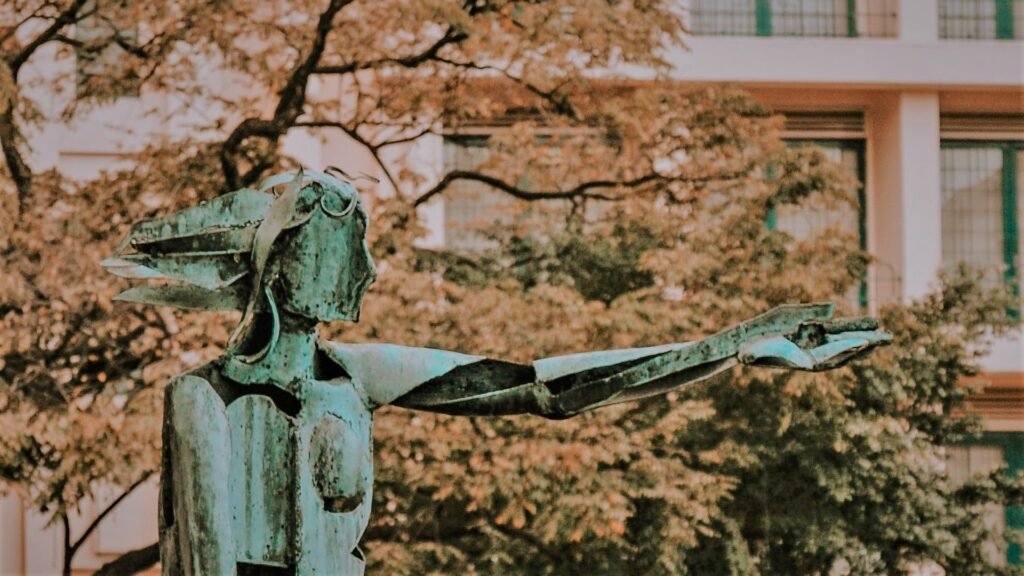
Thriving Art Scene
Sampaloc Manila, boasts a thriving art scene that showcases the district’s creativity and cultural vibrancy. The art community in Sampaloc is a melting pot of talented artists, musicians, writers, and performers who contribute to the district’s dynamic cultural landscape. Here are some key aspects of the thriving art scene in Sampaloc Manila:

- Art Galleries and Studios: Sampaloc is home to numerous art galleries and studios that feature the works of local artists. These spaces serve as platforms for emerging and established artists to exhibit their paintings, sculptures, and mixed-media art. Visitors can immerse themselves in the diverse range of artistic expressions and gain insights into the local art scene.
- University Arts and Culture Programs: The presence of prestigious universities in Sampaloc Manila, such as the University of Santo Tomas (UST) and Far Eastern University (FEU), contributes significantly to the district’s art scene. These institutions have dedicated arts and culture programs that nurture young talents, organize art competitions, and host exhibitions, enriching the artistic community.
- Public Art Installations: Sampaloc’s streets and public spaces showcase various murals, graffiti, and street art, adding a splash of creativity to the urban landscape. These public art installations often reflect social issues, cultural heritage, and contemporary themes, contributing to the district’s artistic identity.
- Live Performances and Events: The district hosts numerous live performances, art fairs, cultural festivals, and art-related events throughout the year. These events attract artists, enthusiasts, and visitors from across Manila and the Philippines. They offer opportunities for networking, collaboration, and celebration of artistic expression.
- Creative Writing and Literature: Sampaloc Manila also has a vibrant community of writers, poets, and literary enthusiasts. Bookstores, libraries, and cafes often host book launches, poetry readings, and writing workshops, providing spaces for literary discussions and fostering a love for literature.
- Artisan Workshops and Crafts: The district is a hub for artisan workshops and crafts, where skilled craftsmen create intricate handicrafts, pottery, and traditional artworks. These crafts reflect the Filipino identity and cultural heritage, adding to the richness of the art scene.
- Performing Arts: Sampaloc’s cultural landscape includes various performing arts groups, including theater companies, dance troupes, and music ensembles. The district’s vibrant performing arts scene hosts a range of productions, from traditional Filipino plays to contemporary performances, showcasing the diversity of talent.
- Art and Community Engagement: The art scene in Sampaloc Manila extends beyond galleries and theaters. Many artists actively engage with the community through art workshops, outreach programs, and social initiatives. They use art as a medium for social change, creating art that addresses relevant issues and empowers marginalized groups.
- Street Art Festivals: Sampaloc occasionally hosts street art festivals, where artists from different backgrounds create large-scale murals and installations in public spaces. These festivals not only beautify the district but also promote a sense of community and artistic expression.
Sampaloc Manila, boasts a thriving art scene that reflects the district’s cultural diversity and creative spirit. From art galleries and public installations to live performances and literary gatherings, the art community in Sampaloc Manila provides a vibrant platform for artists and enthusiasts alike to celebrate and explore the world of artistic expression. Visitors to the district can immerse themselves in this dynamic cultural landscape, witnessing the beauty and innovation of the local art scene.
Sports and Recreation
Sports and recreation play a significant role in the life of Sampaloc Manila’s residents, providing avenues for leisure, physical activity, and community bonding. Despite the district’s urban environment, there are various sports facilities, parks, and recreational spaces that cater to the diverse interests of its residents. Here are some aspects of sports and recreation in Sampaloc Manila:

- Basketball: Like the rest of the Philippines, basketball is a popular sport in Sampaloc Manila. The district has numerous basketball courts, both indoor and outdoor, where residents gather to play friendly games and competitive tournaments. Basketball courts serve as important community spaces, bringing people of all ages together through their shared love for the sport.
- Local Gyms and Fitness Centers: Sampaloc has several gyms and fitness centers that offer workout facilities, group classes, and training sessions. These establishments cater to fitness enthusiasts, athletes, and those looking to lead an active lifestyle.
- University Sports Events: With its concentration of universities, Sampaloc Manila is a hub for collegiate sports events. Universities regularly organize sports competitions in various disciplines, such as basketball, volleyball, track and field, and more. These events attract both students and sports enthusiasts from across the district.
- Rizal Memorial Sports Complex: While not located directly in Sampaloc, the Rizal Memorial Sports Complex in nearby Malate serves as a major sports hub in Manila. The complex hosts various national and international sporting events and provides state-of-the-art facilities for athletes and sports fans.
- Parks and Open Spaces: Sampaloc Manila offers several parks and open spaces where residents can engage in recreational activities such as jogging, cycling, and picnicking. These green spaces provide a refreshing break from the urban environment and offer opportunities for relaxation and exercise.
- Martial Arts and Self-Defense: Sampaloc has martial arts studios that offer training in disciplines like karate, taekwondo, and kickboxing. These classes cater to individuals of all ages, promoting physical fitness and self-defense skills.
- Local Sports Leagues: Sampaloc Manila hosts various local sports leagues that provide organized competitions for sports enthusiasts. These leagues encompass a range of sports, from basketball and volleyball to football and table tennis.
- Community Sports Events: Sampaloc’s community organizations often organize sports events and tournaments to foster camaraderie and promote healthy competition among residents. These events contribute to building a strong sense of community within the district.
- Outdoor Activities: Although Sampaloc is a densely populated area, nearby nature reserves and parks offer opportunities for outdoor activities like hiking, birdwatching, and eco-friendly pursuits.
Sampaloc Manila, offers a diverse array of sports and recreational opportunities that cater to the interests and preferences of its residents. From basketball courts and gyms to university sports events and community leagues, the district provides a well-rounded sports and recreational experience. Residents and visitors can enjoy staying active and connecting with others through various physical activities available in this vibrant urban district.

Religious Traditions
Sampaloc Manila, is deeply rooted in religious traditions, and the district’s cultural fabric is interwoven with various religious practices and festivities. As a predominantly Catholic area, Sampaloc celebrates numerous religious events and has a rich tradition of devotion and faith. Here are some aspects of religious traditions in Sampaloc Manila:
- Feast of the Black Nazarene: The Feast of the Black Nazarene, held every January 9th, is one of the most significant religious events in Sampaloc Manila. Millions of devotees from all over the Philippines flock to Quiapo to participate in the grand procession of the Black Nazarene statue. The devotees, clad in maroon and yellow, carry the centuries-old statue through the streets, expressing their fervent faith and seeking blessings and miracles.
- Other Religious Processions: Aside from the Feast of the Black Nazarene, Sampaloc observes numerous other religious processions throughout the year. These processions often take place during the feast days of various patron saints of the district’s barangays (neighborhoods). Devotees come together to offer prayers, attend masses, and join the processions as a way to express their devotion and seek divine protection.
- Santo Niño Celebrations: The Feast of Santo Niño, also known as the Feast of the Child Jesus, is celebrated in Sampaloc Manila and other parts of the Philippines every January. The festivities include lively street dances, parades, and religious activities, with devotees honoring the Santo Niño as a symbol of love, innocence, and protection.
- Lenten Observances: During the Lenten season, Sampaloc residents observe various religious traditions, such as participating in Holy Week processions, attending church services, and engaging in acts of penance and reflection. Good Friday processions, in particular, are significant events, where devotees reenact the Passion of Christ and offer prayers for forgiveness and spiritual growth.
- Church Activities and Novenas: The numerous churches in Sampaloc Manila, including San Sebastian Church and other parish churches, hold regular masses, novenas, and religious activities. These events provide opportunities for devotees to deepen their faith and connect with their communities.
- Religious Shrines and Devotionals: Sampaloc is home to various religious shrines and devotionals, each with its unique significance and following. These shrines serve as pilgrimage sites for devotees seeking spiritual solace and healing.
- Interfaith Dialogue: While predominantly Catholic, Sampaloc Manila also embraces religious diversity, with places of worship for other faiths, such as Islam and Buddhism, scattered throughout the district. Interfaith dialogue and cooperation contribute to the district’s harmonious coexistence of different religious communities.
- Religious Charitable Activities: Many religious organizations in Sampaloc are actively involved in charitable activities, such as feeding programs, medical missions, and outreach to marginalized communities. These initiatives reflect the district’s commitment to living out religious values through service to others.
Religious traditions in Sampaloc Manila, are an integral part of the district’s cultural identity. The diverse religious practices and festivities foster a sense of community, devotion, and spiritual growth among its residents. Whether it’s the grand celebrations of the Feast of the Black Nazarene or the solemn observances of Lent, Sampaloc’s religious traditions contribute to the spiritual richness of the district and the broader religious tapestry of the Philippines.

Community Engagement
Community engagement is a vital aspect of life in Sampaloc Manila, as residents actively participate in various community activities and initiatives. The district’s strong sense of community fosters cooperation, solidarity, and a shared responsibility for the well-being of its residents. Here are some key aspects of community engagement in Sampaloc:
- Barangay Participation: Barangays (neighborhoods) in Sampaloc play a crucial role in community engagement. Each barangay has its own set of elected officials and community leaders who organize local events, address community concerns, and promote initiatives that benefit the residents. Barangay assemblies and meetings provide platforms for residents to voice their opinions and contribute to decision-making processes.
- Neighborhood Associations: Apart from barangays, Sampaloc Manila has various neighborhood associations and homeowners’ groups that bring together residents with shared interests and concerns. These associations organize community activities, promote safety and security, and advocate for the improvement of local amenities.
- Community Clean-Up and Beautification: Community clean-up drives and beautification projects are common in Sampaloc. Residents come together to clean streets, parks, and public spaces, fostering a sense of pride in their surroundings and promoting a cleaner and healthier environment.
- Cooperative Initiatives: Community cooperatives and social enterprises are prevalent in Sampaloc Manila. These initiatives empower residents by providing opportunities for economic growth and self-sufficiency. From food cooperatives to craft-making groups, these endeavors strengthen community ties and promote shared prosperity.
- Sports and Recreational Activities: Sports leagues and recreational programs are organized within the community to encourage active lifestyles and foster camaraderie among residents. These activities promote not only physical health but also social interaction and community bonding.
- Community Feeding Programs: Sampaloc residents, often through religious organizations and charitable groups, engage in community feeding programs to provide meals and support to those in need. These programs target vulnerable populations, such as street children, the elderly, and low-income families.
- Livelihood and Skills Training: Residents in Sampaloc Manila participate in livelihood and skills training programs to enhance their employability and income-generating capabilities. These initiatives empower individuals to become self-reliant and contribute to the local economy.
- Disaster Preparedness and Response: Community engagement is vital in disaster preparedness and response efforts. Residents work together to create disaster response plans, conduct drills, and provide assistance to those affected by natural calamities.
- Cultural and Religious Festivals: Religious and cultural festivals in Sampaloc bring the community together in celebration. Residents actively participate in organizing and participating in these festivities, fostering a sense of shared heritage and tradition.

Community engagement in Sampaloc Manila, reflects the district’s strong sense of community and the spirit of cooperation among its residents. Whether it’s through barangay participation, neighborhood associations, or cooperative initiatives, Sampaloc residents actively work together to improve their quality of life, support one another, and celebrate their shared identity. Community engagement in Sampaloc plays a pivotal role in nurturing a sense of belonging and contributing to the district’s vibrant and cohesive social fabric.
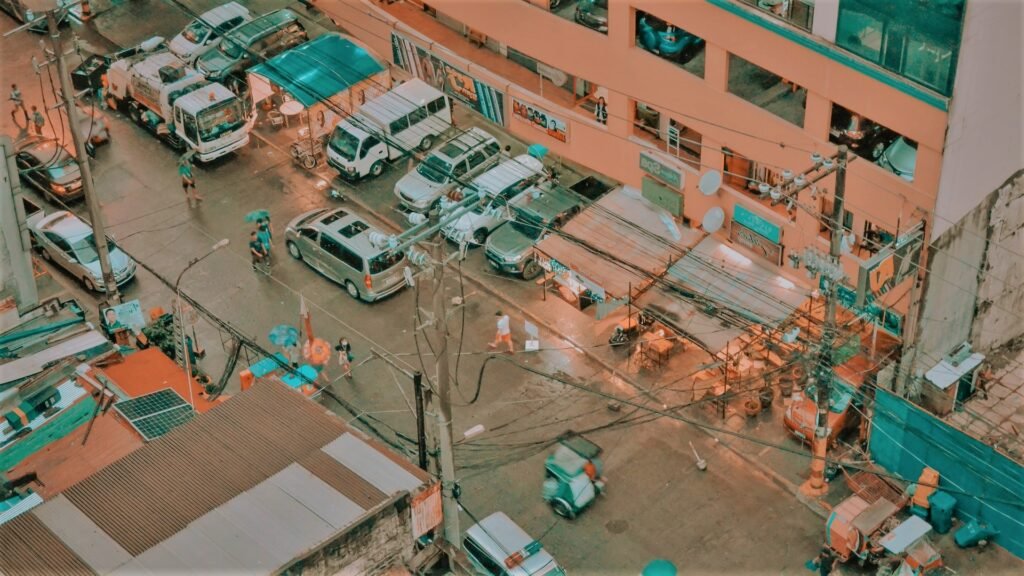
Sampaloc Manila, is an enchanting enclave with a multitude of themes waiting to be explored. From its historical landmarks to cultural diversity, educational institutions to architectural wonders, and from bustling markets to serene parks, this district encapsulates the essence of Manila’s charm. Whether you’re a history buff, a culture lover, or an adventure seeker, Sampaloc has something unique to offer, leaving you with unforgettable memories and a deeper appreciation for the Philippines’ captivating heritage.
Check out our other blogs here.
